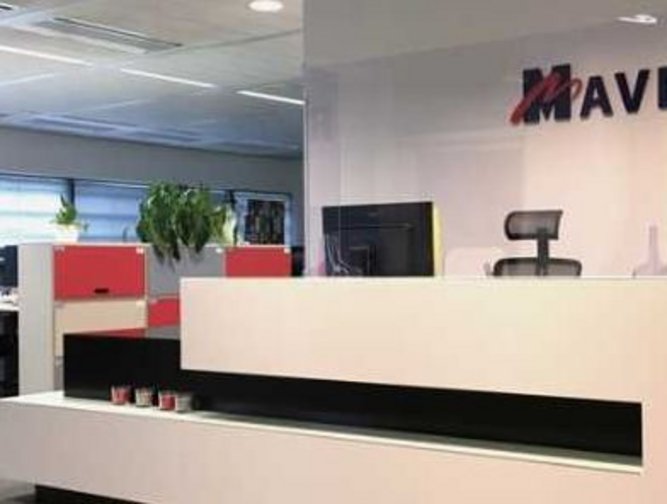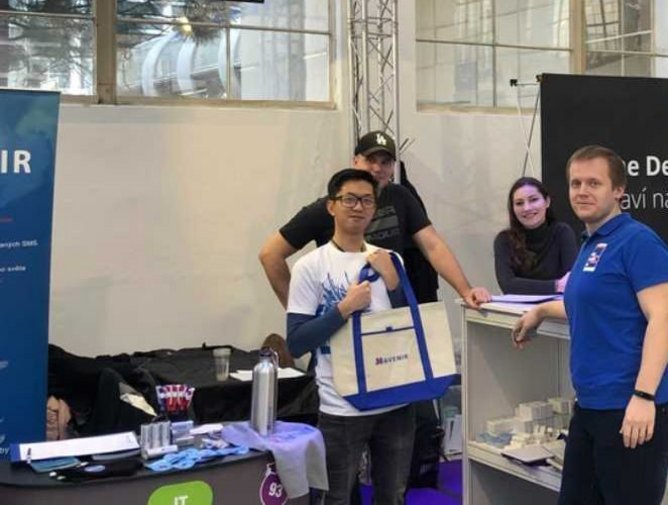The evolution of global telecommunications networks from 4G to 5G is proceeding at an unprecedented speed. However, as the telecom industry embarks on this generational leap, the strategies, business models and infrastructure technology required to support this evolution have yet to be fully realised.
5G offers lower latency, greater throughput, less delay, and a huge increase in the number of connected devices, which places demands on existing network architecture practices that are no longer sustainable. “One of the things we are seeing in the 5G space now is that a lot of people in the industry are talking about 5G networks in terms of architecture that was suitable for 2G and 3G, but is no longer suitable for 5G,” explains Dr Virtyt Koshi, senior vice president and general manager EMEA at Mavenir. “You can’t build high speed 5G networks in the same way that we built voice centric 2G and kbps low speed 3G networks.”
As the global telecom industry changes and adapts to an increasingly digitalised world, Mavenir is leading a new generation of companies with extensive solution portfolios focused on helping telecom operators automate, cloudify, expand and drive efficiency across their networks on the road to 5G and beyond. The company is also leading the industry charge on the subject of open radio access networks (OpenRAN), a revolutionary new approach to mobile networking that allows operators to slot different products from different vendors into their network architecture, eliminating the need to buy locked proprietary systems from a single firm.
“OpenRAN allows the flexibility to bring best of breed solutions to market, reduce CapEx, lower OpEX, and grant our customers the ability to decrease time to market with new products and services like mobile edge computing, high throughput 5G and private networks, and advanced consumer communications,” Koshi explains. We sat down with him to discuss the ways in which Mavenir is bringing revolutionary degrees of network flexibility to its customers, allowing them the agility they need to compete in the 5G age.
The journey to 5G
As a result of using higher frequency signals, 5G networks can transmit more information an order of magnitude faster than 4G and earlier generations of mobile network technology. However, Koshi notes, in order to practically establish 5G coverage, telecom operators face serious obstacles from a CapEx and regulatory perspective, as well as the laws of physics themselves.
“We need to move from macro structures to smaller cell structures with 5G networks,” he explains, noting that while it is possible to cover large areas with a 5G network using a single site, economies of scale very quickly render such an approach impractical in areas of highest demand.
“The transmitter power has to be large. For example, CSP’s quote twice as much power is needed for 5G than 4G. This becomes a big regulatory and safety constraint, on top of all the logistical and spatial (real estate) issues that creates. All that impacts your time to market and OpEx,” he adds.
From a practical point of view, Koshi adds, the size of 5G network infrastructure is also very much dictated by the laws of physics. “The industry is moving towards using smaller sites as the basis for 5G networks, because the higher your frequency, the faster the signals you’re sending break down and dissipate.”
The result is that, particularly in Europe, the 5G network rollout has been hampered by affordability issues. “In addition to Capex challenges due to very expensive traditional equipment, the OpEx that is required to build, operate and maintain a telecom network becomes enormous because it’s primarily a real estate driven business, which drives up expenditure,” Koshi notes.
This is where Mavenir comes in. With a laser focus on intelligent, cloud-based innovation in the telecom space, the company has been turning its collective experience expertise to new ways of thinking about building a telecom network.
“We’re looking at building webscale networks which are, by an order of magnitude, more cost-efficient compared to what’s being offered by the market’s legacy suppliers. Webscale networks are cost-effective from a CapEx perspective and bring huge OpEx savings to the operator as well,” he explains.
Delivering what the market needs
Mavenir’s executive team is made up of some of the most experienced players in the telecom industry. CEO and founder, Pardeep Kohli, who has an impressive track record in establishing and leading innovative companies, among others, served as the CEO of Ranzure, one of the earliest players in the 5G cloud RAN solutions space. Stefano Cantarelli, Mavenir’s EVP and CMO, is a veteran of Huawei and Vodafone, etc.
Koshi himself was an instrumental player in Ericsson’s transformation from a legacy vendor to virtualisation and telco supplier, also working as the head of technology strategy at Vodafone UK. “Our focus is always on identifying what matters and is best for our customers,” he elaborates. “A lot of people who work for Mavenir now used to work for large operators and telecom suppliers, so we’re also experienced with and focused on what matters to our customers’ customers.”
He adds that the key criteria for success at Mavenir is finding the best possible ways to meet the needs of its customers, and its customers’ customers.
“We ensure that all businesses are being served with the latest solutions that add value to their operations, and that consumers are being given access to the services that delight them,” he says. “To achieve that criteria, we need to work backwards from the goal. We need to figure out if we have effective and efficient networks to support those goals and whether we can continue investing in those networks to keep meeting demand.”
Koshi explains that, while the industry is inexorably moving towards 5G, previous generation networks still have a role to play. “Some of the older networking technologies still serve a function. Even 2G networks can use their low bandwidth to support IoT devices. Also, 4G has become a very reliable mobile broadband service for the consumer segment.” The role of 5G, he continues, lies in connected industrial applications, like automated production systems, new business models, new virtual services, etc”
“It’s going to revolutionise industrialisation around the world considering the higher speeds and levels of connectivity it can deliver.” Use cases like autonomous vehicles, remote health-care, and enhanced broadband applications like cloud gaming and mixed reality, however, are also on track to radically alter both the consumer experience, and the demands placed upon telecom networks to provide them.
“We’re talking about tens of billions of connected devices, wearables and sensors that current generation networks will not be able to sustain,” Koshi says. “When you look at all the requirements of 5G, like latency, throughput, capacity, delay and the demands made by 5G services, it all conspires to make 4G infrastructure non-viable for this next generation of products and services.”
Leading an OpenRAN revolution
As the demands on mobile networks increase, operators need access to unprecedented levels of flexibility and efficiency in order to ensure that their architectures are suitable for the coming of the 5G age.
Traditionally, mobile carriers have only been able to purchase radio network infrastructure from small groups of legacy suppliers like Huawei, Ericsson and Nokia, which provide a proprietary and inflexible package that might not suit every need. Mavenir, along with other players in the space, is looking to change this through the rapid expansion of OpenRAN.
By allowing operators to combine hardware and software solutions from a wide range of different suppliers, OpenRAN allows carriers to more readily embrace cloud-based software solutions and select the best hardware for their unique needs. The result is a world where mobile networks are far more future-proof than in previous generations.
“OpenRAN has really captured the market’s imagination and Mavenir is the leader in that market,” says Koshi. “We provide a unique proposition to our customers, and have been able to work with Vodafone, Turkcell, O2 UK, Dish (US) and many others on innovative Open RAN projects.”
Comba Telecom
In the modern telecom industry, no company is an island. “Any telecommunication network vendor depends on its supplier ecosystem, whether that’s Nokia, Ericsson, Huawei, and so on. No one can exist on their own in this commercial context,” Koshi explains. “For example, we work with the market leaders in antennas, globally, such as Comba Telecom.”
Headquartered in Hong Kong, Comba Telecom is one of the world’s leading solutions and services providers for the wireless access and antenna market.
Earlier this year, Comba and Mavenir collaborated on a groundbreaking project with Turkcell, delivering integrated OpenRAN solutions into the Turkish telecom’s network core. “We did a truly innovative project with Comba and Turkcell, implementing fully containerised CU/DU and Open Front-Haul with Split 7.2 in trial deployments,” says Koshi. “That means the radio is completely open to any base band software or other company software. It’s an alternative to the proprietary common private radio interface that you get with a lot of suppliers today, which gives a massive amount of flexibility.”
From Telegraphy to 5G
The history of human evolution and society is the history of communications. Koshi emphasises the fact that, from the invention of telegraphy to the invention of the telephone, to data communications, to mobile and now to 5G, the ability to exchange information over great distances has driven society forward.
“It’s enabled not only business productivity but also wide social communication. The world needs to continue investing in telecommunications for the sake of people, businesses and our planet as a whole,” he says, adding that Mavenir is and will continue to play an important role in that process.
“Mavenir is one step ahead of the curve in terms of innovation, creativity and bringing new ideas to the market. Going forward, we’re going to deploy and bring this leading edge technology to as many customers as possible, so they can benefit from as early as possible, and reduce their time to market while launching new and exciting projects that have a manageable CapEX and OpEX.”



- Virtyt Koshi

